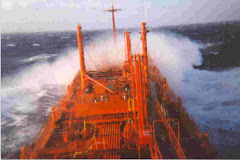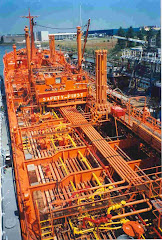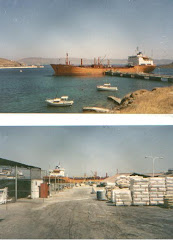Although tanker rates are hardly booming after being the wall flower last year in the shipping markets, this sector has been consistently outperforming the dry bulk sector this year. This contrast is more due to weakness in dry bulk rates and somewhat better tanker rates than last year. The crude sector is showing signs of strength over the popular clean sector. At the heart of these developments are changes in energy sources and trade flows.
Not surprisingly, the clean tanker sector has an order book that is nearly twice as big on a relative basis. Asset values were broadly higher in the tanker markets in the first half of 2014, but current values do not support the expected earnings environment
The vast majority of tanker demand originates from the movement of crude and residual fuels.
Crude oil marine transportation demand for tankers arises from matching refinery raw materials needs with crude oil production. Petroleum product marine transportation demand arises from matching consumption with refined product production in refining regions.
More than 50% of projected growth in demand is forecast from China and India. Energy use in the US and EU has been fairly stagnant for many years. Oil market fundamentals suggest a moderation of crude price increases in the near future in the absence of geopolitical influences. Natural gas is the fastest growing fossil fuel, supported by increasing supplies of shale gas, particularly in the US.
US domestic oil production forecasted in 2015 to rise to the highest level since 1972. Most of this domestic production is light sweet crudes. A steadily increasing proportion of heavy crudes are being imported to the US driven by growing abundance of domestic light sweet grades. The US is likely to restart export of crude oil, but not for several years ahead. This will be light sweet crude. It will be highly dependent on the prevailing level of oil prices and US domestic politics. Meanwhile, the US Gulf has become a major clean product export hub providing robust volumes of gas oil and gasoline to Atlantic Basin.
Tanker ton-mile demand is likely be modest over the next few years. Ton-mile demand has been falling in the MR sector. Currently LR freight rates are higher for trading dirty cargoes than clean. Further the MR sector is being cannibalized on longer haul routes by larger LR units. The clean sectors are burdened by heavy supply outlook against only moderate demand growth. The MR’s are under the most pressure with the poorest fundamentals.
The dirty sector tonnage supply is moderate and demand positive. The VLCC sector faces a large number of deliveries in 2015 and 2016, which creates a neutral freight outlook until the 2018 when some increase is anticipated, assuming new contracting is controlled. Suezmax demand growth is somewhat more positive but dependent on continuing demand for this size in longer haul trades. The Aframax sector has been subject lately to high geopolitical volatility especially with the chaos in Libya but order book situation is more favorable.
than the larger sizes, opening more opportunity for rate increases.
Critical to any meaningful improvement in the tanker markets is a global economy gaining traction to approximately 4% growth needed to underpin the necessary expansion in oil demand and trade. This year, growth projections have been reduced due the poor performance of the European Union with its deflationary policies and China rebalancing with a slowing in infrastructure projects and sorting out losses in the domestic banking system.
This remains a prerequisite for the freight market to make a return to a moderate level of profitability. Given the number of high profile publicly listed tanker company bankruptcies, the fate of the reorganized companies like Genmar and OSG will turn on when and how soon there will be recovery in the tanker freight markets.
Earnings margins are likely to remain tight. Trading life of tanker fleets is likely to become shorter. Competitive advantage will come from modern fuel efficient tonnage, good commercial management, and moderate financial expense.








